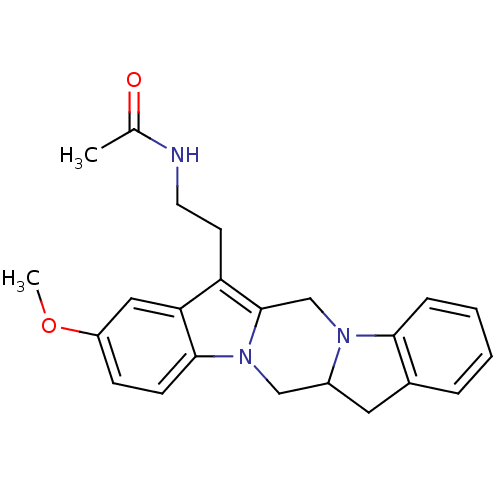null
SMILES COc1ccc2n3CC4Cc5ccccc5N4Cc3c(CCNC(C)=O)c2c1
InChI Key InChIKey=UBSQZXKDXDODTC-UHFFFAOYSA-N
Activity Spreadsheet -- Enzyme Inhibition Constant Data from BindingDB
 Found 4 hits for monomerid = 50266406
Found 4 hits for monomerid = 50266406
Affinity DataKi: 65nMAssay Description:Displacement of 2-[125I]Iodomelatonin from human MT2 receptor expressed in CHO cellsMore data for this Ligand-Target Pair
Affinity DataKi: 65.2nMAssay Description:Displacement of 2-[125I]iodomelatonin from human melatonin MT2 receptor expressed in CHO cellsMore data for this Ligand-Target Pair
Affinity DataKi: 319nMAssay Description:Displacement of 2-[125I]iodomelatonin from human melatonin MT1 receptor expressed in CHO cellsMore data for this Ligand-Target Pair
Affinity DataKi: 320nMAssay Description:Displacement of 2-[125I]Iodomelatonin from human MT1 receptor expressed in CHO cellsMore data for this Ligand-Target Pair
